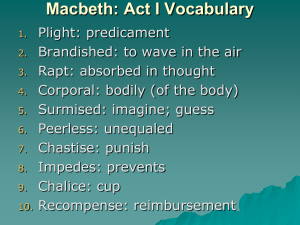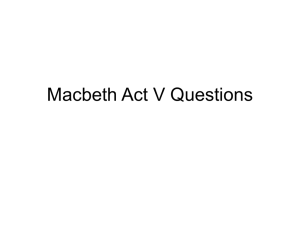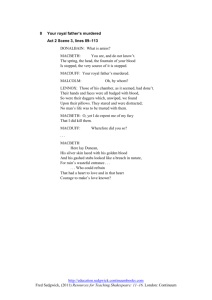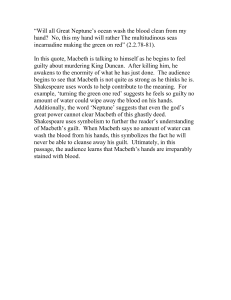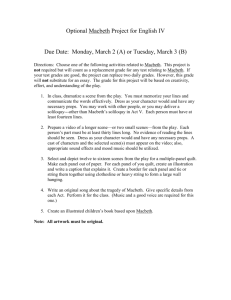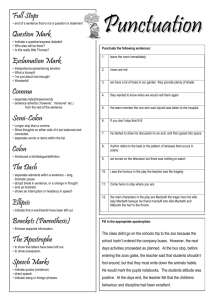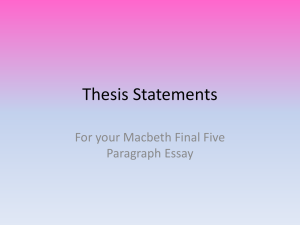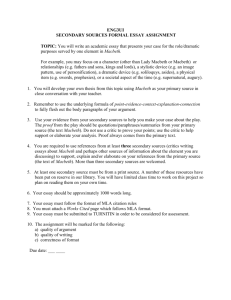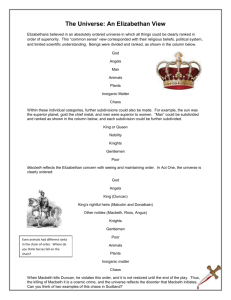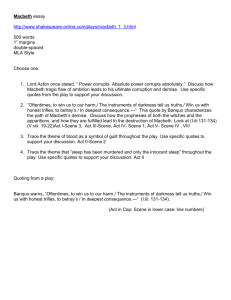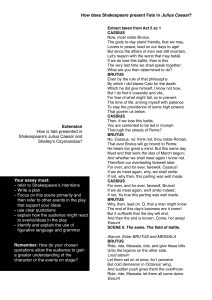Structures--If/Then Constructions
advertisement
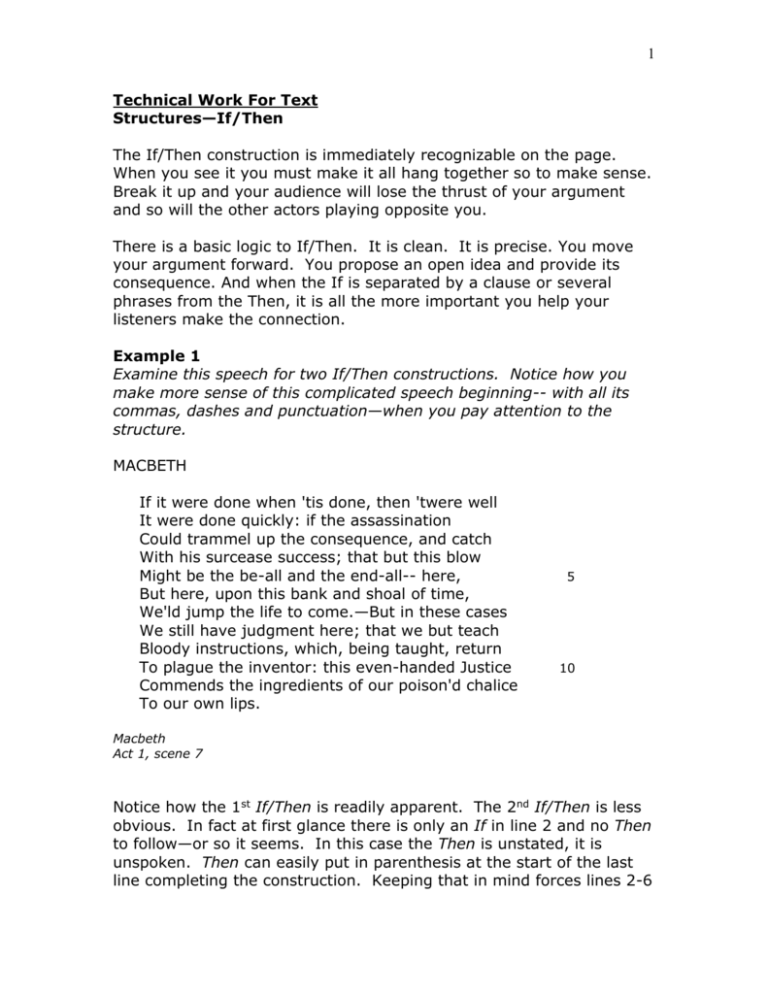
1 Technical Work For Text Structures—If/Then The If/Then construction is immediately recognizable on the page. When you see it you must make it all hang together so to make sense. Break it up and your audience will lose the thrust of your argument and so will the other actors playing opposite you. There is a basic logic to If/Then. It is clean. It is precise. You move your argument forward. You propose an open idea and provide its consequence. And when the If is separated by a clause or several phrases from the Then, it is all the more important you help your listeners make the connection. Example 1 Examine this speech for two If/Then constructions. Notice how you make more sense of this complicated speech beginning-- with all its commas, dashes and punctuation—when you pay attention to the structure. MACBETH If it were done when 'tis done, then 'twere well It were done quickly: if the assassination Could trammel up the consequence, and catch With his surcease success; that but this blow Might be the be-all and the end-all-- here, But here, upon this bank and shoal of time, We'ld jump the life to come.—But in these cases We still have judgment here; that we but teach Bloody instructions, which, being taught, return To plague the inventor: this even-handed Justice Commends the ingredients of our poison'd chalice To our own lips. 5 10 Macbeth Act 1, scene 7 Notice how the 1st If/Then is readily apparent. The 2nd If/Then is less obvious. In fact at first glance there is only an If in line 2 and no Then to follow—or so it seems. In this case the Then is unstated, it is unspoken. Then can easily put in parenthesis at the start of the last line completing the construction. Keeping that in mind forces lines 2-6 2 to hang together as one. Not kept in mind, lines 2-6 are a jumble and seem to meander. Macbeth’s mind is not meandering. In fact it is bursting trying to corral the enormity of the task at hand. And it is the If/Then structure that does the corralling. Not only that, it clearly puts these two scenarios in direct opposition to But in these cases, where Macbeth weighs the other side of the question—do I go through with the murder or not? Example 2 Examine this speech for a variation on the If/Then construction. How many Ifs can you find? CASSIUS Therefore, good Brutus, be prepared to hear: And since you know you cannot see yourself So well as by reflection, I, your glass, Will modestly discover to yourself That of yourself which you yet know not of. And be not jealous on me, gentle Brutus: Were I a common laughter, or did use To stale with ordinary oaths my love To every new protester; if you know That I do fawn on men and hug them hard And after scandal them, or if you know That I profess myself in banqueting To all the rout, then hold me dangerous. 65 70 75 Julius Caesar Act 1, Scene 2 Again, it is easy to find the first If, if you look carefully. Think about it. Lines 70-71 are all one sentence and therefore one idea that is composed of several smaller parts or clauses. So, the 1st If is in line 71, disguised as Were I, as in If I were. Making sure you start the If/Then construction there pulls lines 71-77 together. The 2nd If is unstated, unspoken—it resides between or and did, as in or if I did use, in Line 71. The other two are obvious in lines 73 and 75. To get through all that you will need to resist letting your voice accidentally put a period in there anywhere. Technically, this is done by always keeping your voice in an upglide at the commas, colons and semicolons until the period arrives. Emotionally, Cassius knows that he has 3 several Ifs to present if he is to successfully convince Brutus of his point of view. Whenever you see an If/Then construction, don’t run away from it; give into it, if only for the sake of clarity.
